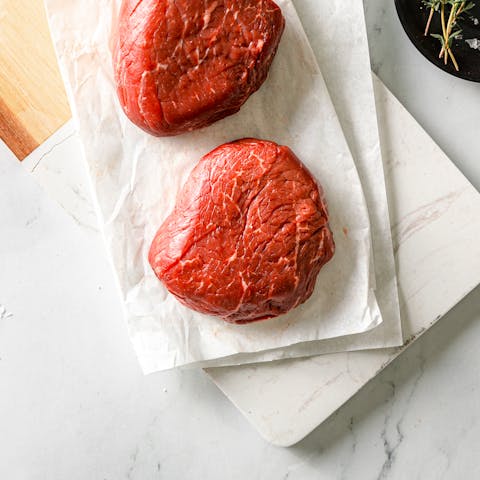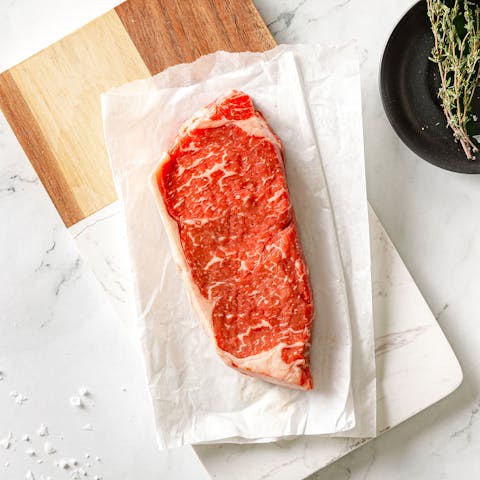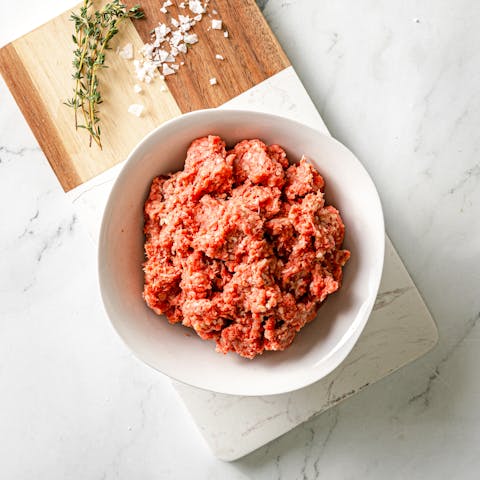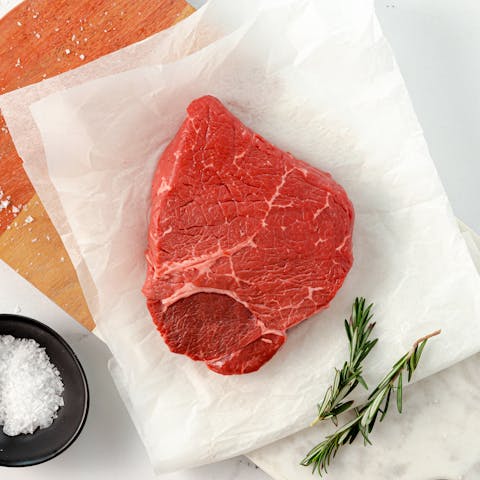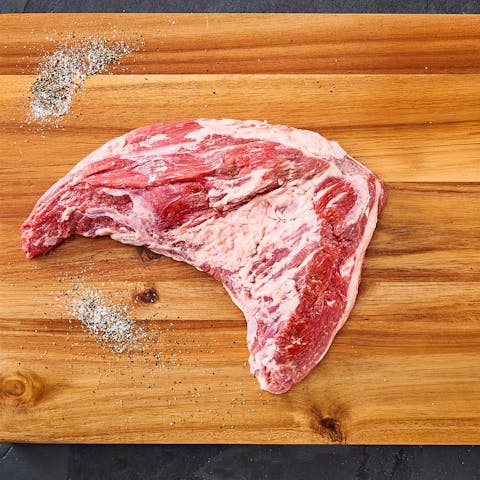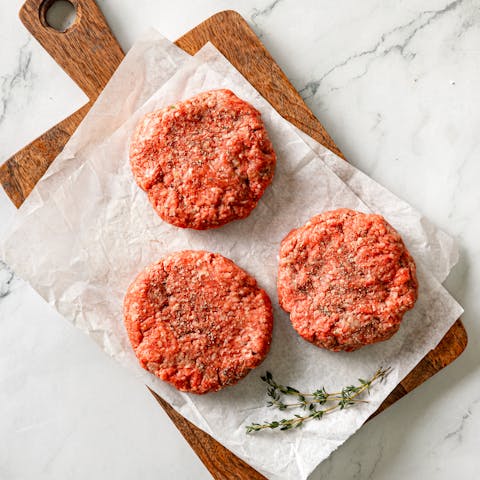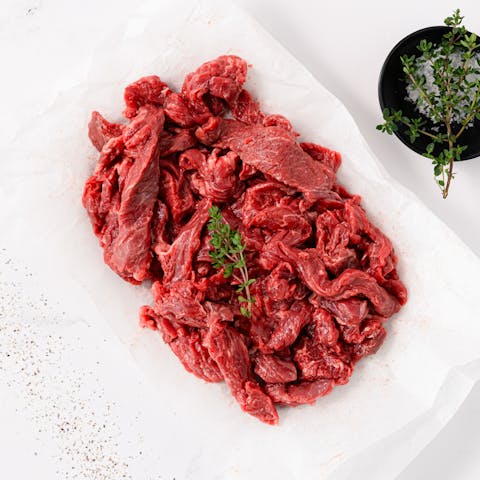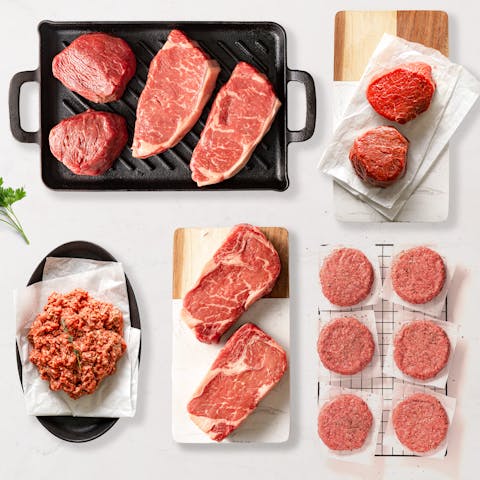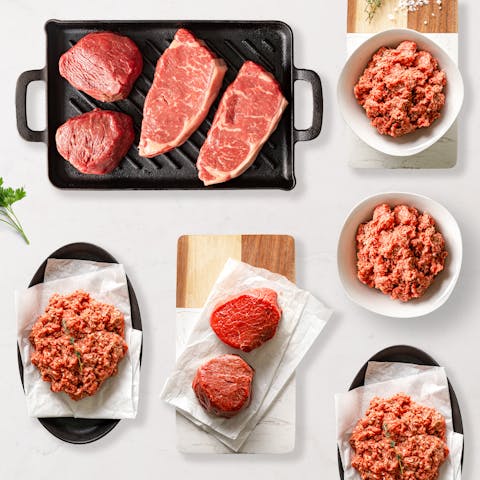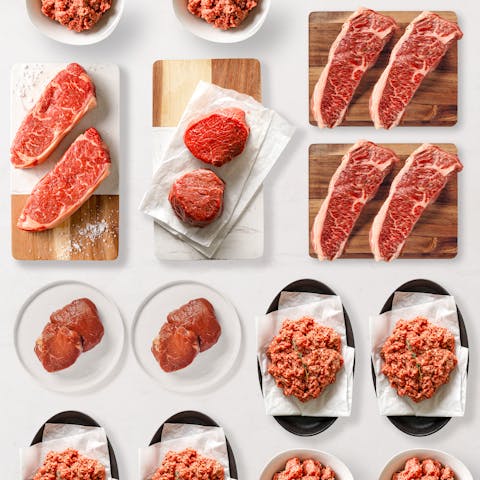100% grass-fed, sustainably raised on lush pastures without antibiotics or growth hormones. Mild flavor, naturally tender and juicy. Learn More
The Grass-Fed Difference
Grass-finished cattle are raised on a diet of exclusively mother's milk and forage, containing more healthy fats than grain-finished beef. Grass-finished cattle offer a leaner beef, rich in fatty nutrients, with a clean, mild taste.

Raised on Pasture
Raised on the pristine pampas of Uruguay, our 100% grass fed cattle enjoy lush pastures, open skies and ideal climates for raising cattle with moderate temperatures year round. One of the best countries for raising grass fed cattle, Uruguay boasts one of the largest clean water reserves and is free of snowstorms, land movements, hurricanes and glacial temperatures.

Cooking Grass-Fed Steak
Grass-fed steak has less water and fat than the grain-finished steaks you might be used to, so it cooks 25-30% faster. For instance, if you usually cook rib steaks for 4 minutes per side, try 3 minutes with a grass-finished steak. To keep the meat moist and prevent it from overcooking and drying out, marinades are essential. Along with rubs, they are perfect for rounding out the flavor of grass-fed beef.
Beef Cooking Guides
At Crowd Cow, we've had the good fortune to taste a lot of grass-fed, grass-finished beef -- from different cuts and different producers. We've found that grass fed beef usually takes 25-30% less time to cook. You might be used to cooking your rib steaks 4 minutes per side, but for grass-fed beef, you'll want to only give it 3 minutes. Better yet, try sous-viding your grass-fed steaks or preparing them with a reverse-sear.
| Beef Cut | Stove Temp | Avg Time | Finish Temp |
|---|---|---|---|
| New York Strip | Medium Heat (sear) | 12 mins | 135-145 °F |
| Ribeye Steak | Medium Heat (sear) | 12 mins | 135-145 °F |
| Filet Mignon | Medium Heat (sear) | 12 mins | 135-145 °F |
| Ground Beef | Medium Heat (sear) | 12 mins | 165 °F |
Note: The above guidelines are only guard rails. Stove tops, grills, and ovens all vary. Cook times should also take into account thickness of meat. To achieve a perfectly steak or roast, always check temperature intermittently; a meat thermometer comes in handy.
Grilling Steaks FAQ
Depending on temperature of grill and steak type, a 1 inch piece of steak needs close to 2 minutes each side for rare, about 4 minutes each side for medium, and 5 minutes each side for well-done.
Grill over medium to medium-high heat - depending on steak type and size - until internal temperature reaches desired doneness. Be sure to cook both sides of steak at an equal amount of time.
Many people suggest flipping only once, at the middway point of cooking the steak, which is a perfectly good method. But, you can also flip a steak every 30 seconds or so and it will produce a nice crust that is just as good.
Season the steak one hour before cooking, using extra virgin olive oil - or other preferred oil - fresh ground black pepper, and kosher or sea salt.

There's a marked difference between the industrial beef world and the sustainable world of craft beef from independent farms. The industrial beef world trades away health, animal welfare, and variety for low prices, faster turnaround, and heaps of labels that mean little in the long run. USDA Pirce cuts may come from low cost, industrial feedlots.

That leanness, especially, means you need to cook grass-fed, grass-finished steak differently. Grass-fed steak has less water and less fat content than the grain-finished steak you might be used to. Here are our best tips for cooking a grass-finished steak to perfect yumminess: Grass-fed beef takes 25-30% less time to cook.

Discover the significance of regenerative farming and the impact of certifications like Ecological Outcome Verified (EOV). Learn how EOV ensures food is raised regeneratively by assessing soil and landscape for biodiversity, soil health, and ecosystem function. We spoke with Carrie Richards of Richards Grassfed Beef to delve deeper into these practices.


